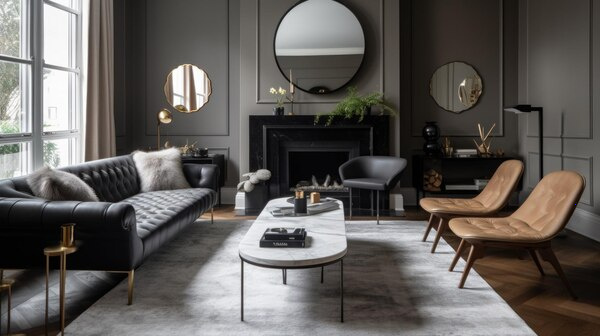Enhancing Spaces: The Art of Interior Design

Interior design is an art that transforms spaces into functional and aesthetically pleasing environments. It goes beyond mere decoration; it's about creating harmony within a space that caters to the needs and aspirations of its occupants. This delicate balance of form and function is what defines superior interior design, making it both a creative and a practical discipline.
At its core, interior design is centered around understanding and manipulating the elements of space, light, color, texture, and form. These elements work in concert to establish a mood and convey a message, turning an ordinary room into an extraordinary experience. Effective use of these elements can make small spaces seem larger, dark rooms brighter, and forgotten corners inviting. This transformative power is what makes interior design such a vital component of architecture and personal expression.
Color, perhaps the most noticeable aspect, plays a crucial role in setting the tone for a room. It can evoke emotions, influence perception, and even affect mood and behavior. For instance, warm colors like reds and oranges can create a sense of energy and warmth, while cool colors like blues and greens can be calming and refreshing. A well-thought-out color scheme can thus serve as a foundation upon which all other design elements are built.
Lighting is another essential component in interior design. The right lighting can highlight architectural features, create a focal point in a room, and establish an ambiance. Natural light is a treasured resource that can open up spaces and make them feel more alive, but artificial lighting can be artfully layered to provide functionality and focus where needed. Understanding the interplay between light and shadow can elevate a design from good to extraordinary.
The selection of furniture and textiles is where functionality meets personal style. Furniture serves as the backbone of a room, dictating how the space will be utilized. Choosing pieces that are both practical and reflective of personal taste is crucial. Upholstery and textiles add color, texture, and comfort, providing a tactile experience that invites individuals to interact with the space.
A significant trend in modern interior design is the emphasis on sustainability and eco-friendliness. More designers are turning to materials and practices that reduce environmental impact, such as using reclaimed wood, sustainable fabrics, and energy-efficient fixtures. This approach not only benefits the planet but also adds a unique character to spaces, making them mindful and forward-thinking.
Interior design is also increasingly incorporating smart technology. From automated lighting systems to intelligent climate control solutions, technology enhances convenience and efficiency in modern homes and offices. This marriage of design and technology offers new ways to optimize spaces for better living and working conditions.
Ultimately, the art of interior design is about creating spaces that reflect the personality, needs, and lifestyles of the people who inhabit them. Whether it's a serene home office, a vibrant living room, or a minimalist kitchen, interior design is about crafting environments that enhance our everyday lives.
The impact of interior design extends beyond individual spaces, influencing community well-being, cultural expression, and even economic value. As such, the field continually evolves, integrating new ideas, materials, and technologies to meet the ever-changing demands of contemporary life. In doing so, interior design not only shapes the physical world but also enriches the human experience.